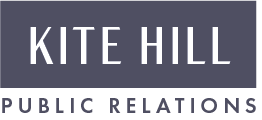PR professionals can be guilty of thinking with a business-first mentality. But actually, that’s backward. We need to be, and think in terms of “human-led”: that’s where thought leadership comes into play as a critical strategy that can crystalize unique ideas and humanize a company.
The perception, and ultimate success, of any company, hinges on its people: how they are treated internally, how they treat others externally (clients, stakeholders, business partners), and how they give back to and within their communities.
To connect with any kind of audience -- even the most clinical or highly technical -- it helps to have a relatable message delivered by a trusted source. And that’s what thought leadership is all about: being an informed opinion leader, a go-to expert in your field of choice. As such, thought leadership is not only key to a great PR plan; it’s a must. The real question lies in how to do it right.
When an executive becomes a thought leader, it is often the result of careful collaboration between an executive who has strong points of view or domain expertise and a smart PR professional that knows how to position them in the market, draw information out, craft great stories and connect them with targeted audiences. Here are a couple of tips on how to do this effectively:
Dig deep.
Your executive just told you she or he wants to be featured in the New York Times. How do you make it happen? It starts with a good intake call. Set up time with the executive and play the role of interviewer. Ask the hard questions. Prepare and demonstrate that you’ve done some homework. Dig into the business, but go a bit further into what might make them tick as a person. What drives them? What was a pivotal moment or aha! moment in their career? For founders, what inspired them to start their company? What leaders do they admire and why? Did they ever fail, and if so, what did they learn from that experience? Their answers should provoke a compelling emotion within you. If they don’t, dig deeper. Everybody has a story worth telling.
Establish credibility and trust.
As you’re digging deeper, you’re establishing a stronger level of credibility and trust with your client -- whether or not you realize it at the time. Let’s go back to that idea of thinking more in more “human-led” terms. Every potential customer, business partner, even employee wants to know that they will be working under leadership that they can relate to on some level, and trust. To get to the heart of that award-winning thought leadership program, you must apply world-class listening to that intake conversation and ask really great questions; you must remember to actively listen to help extract meaningful insights. And trust is a tricky thing. You must trust the process and your instincts; the executive must trust you in order to open up; the audience must trust the executive through her or his written content, commentary, or otherwise actions. If credibility and trust are broken anywhere along the chain, the program will not work to its full potential.
Capture the ideas and create compelling content.
Once you’ve distilled the insights, you need to think big picture of how this translates back to your overall business and marketing goals. From there, develop a content calendar. Take ideas, capture them into story concepts, and translate them into compelling, crisp messages that beget bylined columns or blogs, smart social media posts, podcasts, and more. Your content should help explain a top issue of the day or help solve a business problem likely afflicting those within your wider net. Make it make sense; write with intent.
Encourage action.
Inspire your executive to inspire others within the organization and the larger business community. The way to do that is through action, not lip service. Thought leadership content in the form of bylines, blog posts, webinars, and podcasts are all great, but it’s the action behind the words that will drive real positive impact and potential for the executive and organization. Think about it this way -- who would you rather work for: a leader who talks about inspiring change, or a leader who is on the front lines working to try to make the change happen?
- Mackenzie Gavel, Account Supervisor
